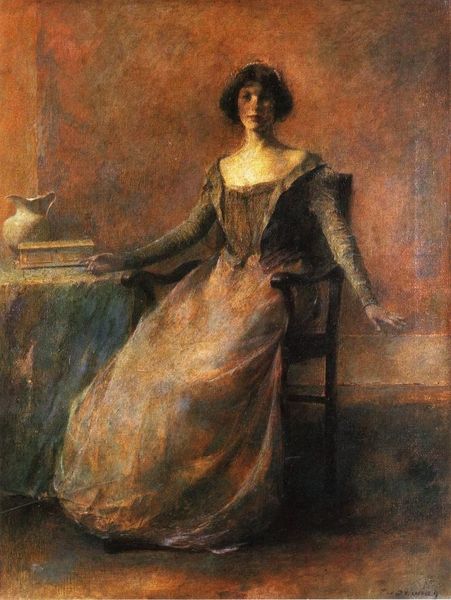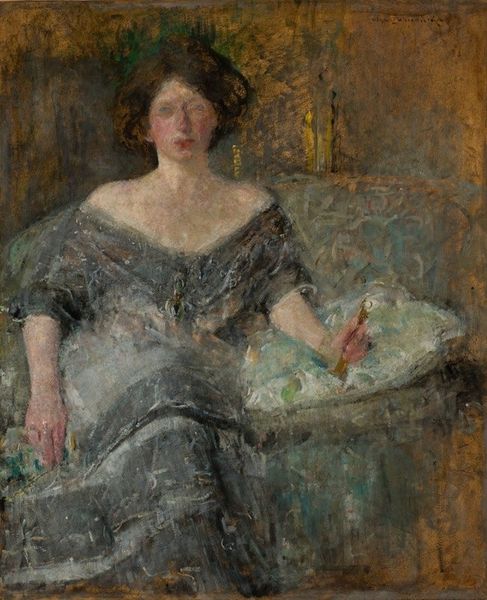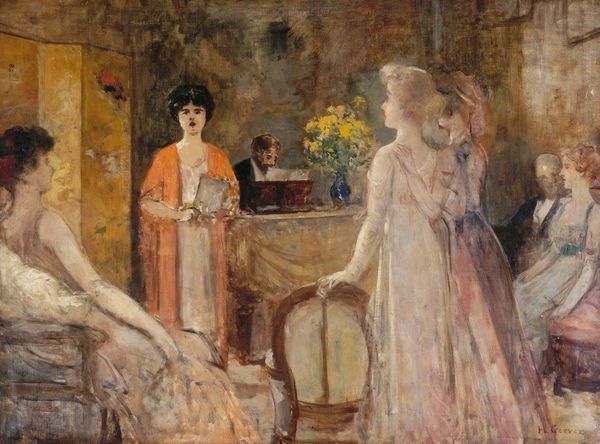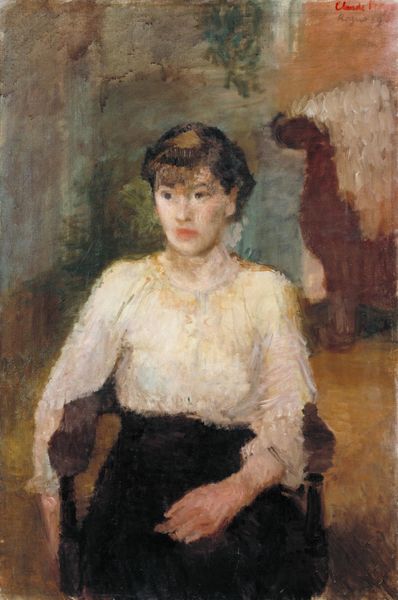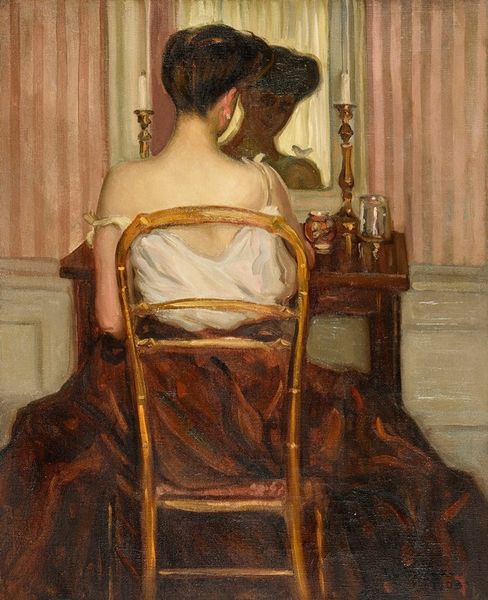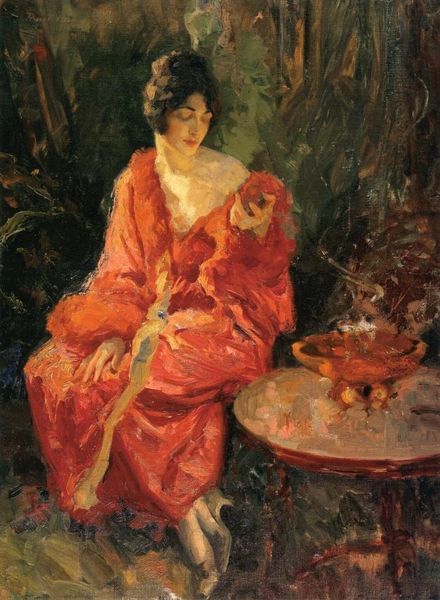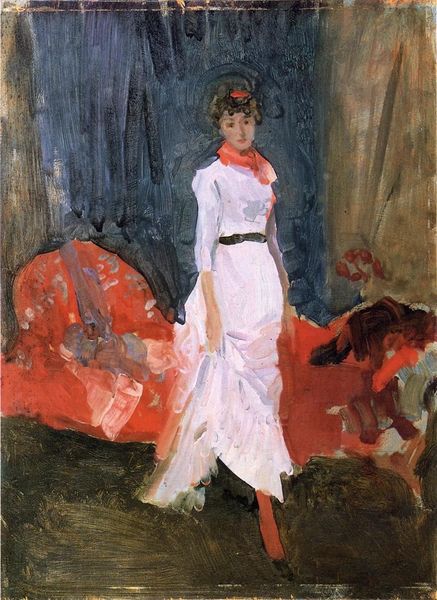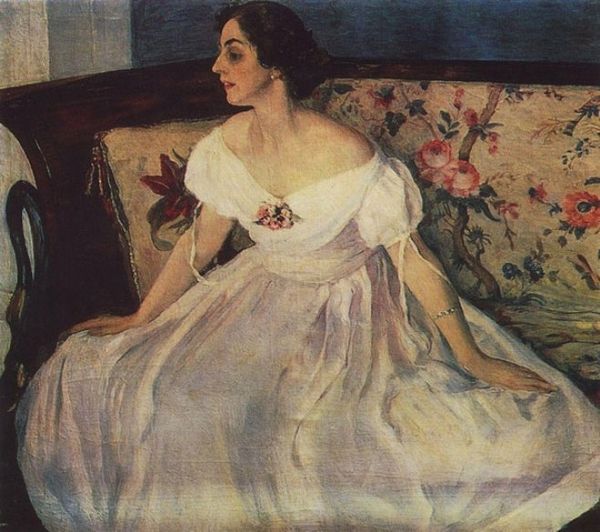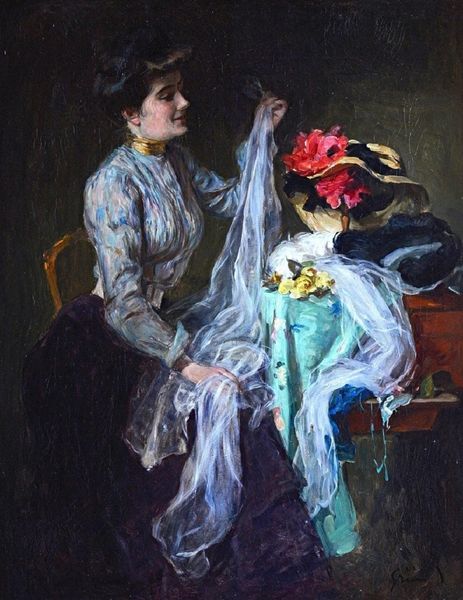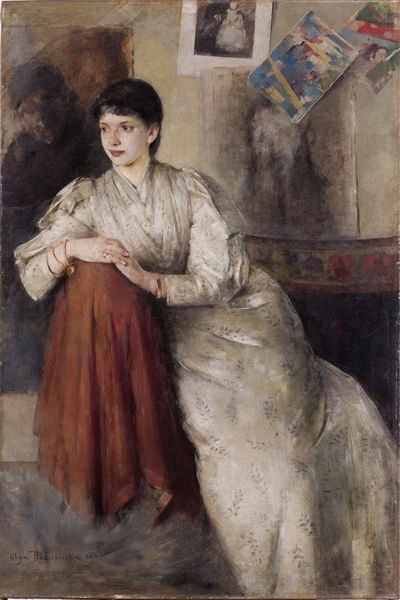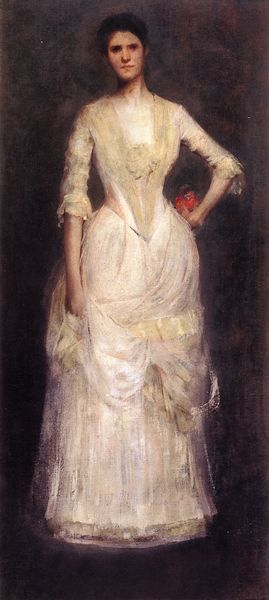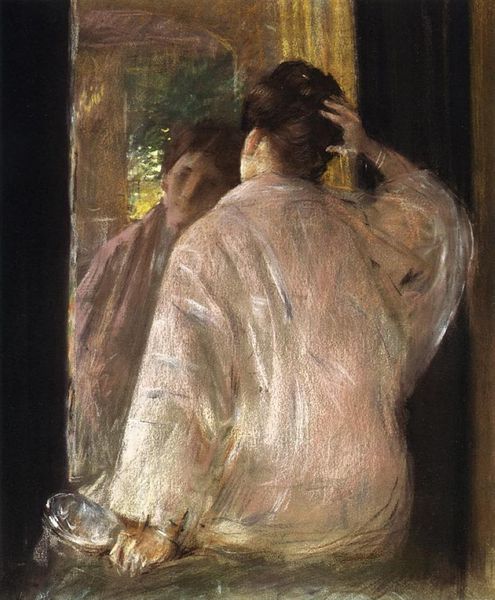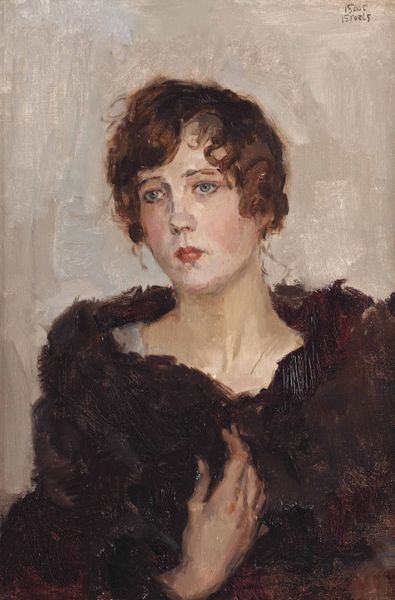
Copyright: Public domain
Curator: Here we have Isaac Israels' "Ippy and Gertie Sun," an oil painting from 1917. My immediate impression is one of subtle unease, perhaps due to the subjects' detached gazes. Editor: I find myself drawn to the interplay of colors and the confident brushwork. The loose handling of the paint gives it an unfinished, almost dreamlike quality. The woman seated, enveloped in those magenta hues... there’s a powerful symbolism here. Purple and red intermingling like that could evoke everything from passion to royalty to sacrifice, depending on context. Curator: It's true that the women possess a modern flair; the work embodies a post-impressionistic spirit. Israels had been living in London and upon return to the Netherlands, he adopted an atelier portraiture, which shows in the way that the bodies seem to have little shape. The figures appear disconnected from any broader social narrative, and it lacks context within artistic trends that might shed some light on interpretations that you suggest. Editor: And yet, those dresses, those fashionable colors for the period... Clothing itself can speak volumes. The one standing back in that black, almost mournful dress - perhaps the artwork serves as an image of transitional pain after loss, or rather a social statement in attire. The styles and accessories of a period provide insights on how a period perceived women's identities. I cannot avoid analyzing the women and how they fit into a timeline. Curator: That is an interesting proposal. I concede that Israels himself circulated within cosmopolitan and fashion circles and depicted those very communities within painting. So, reading them through the symbolic order of clothing does make sense within this view. Editor: So, you would suggest his artistic choices reveal broader influences? Curator: It becomes increasingly apparent when we look at how those figures engage, or rather do not engage, with conventional portraiture in broader exhibitions that promoted social or political movements. The image seems focused purely on mood and aesthetic consideration rather than projecting outward on the sociopolitical state of a time in the past. Editor: So, is Israels suggesting an emerging world that separates from its former expectations? Curator: It invites us to reflect on a turning tide within an image focused on aesthetic rather than the didactic. Editor: A separation from social and political convention. Curator: And, ultimately, whether an image like this, of aesthetic taste, is or is not still intertwined with power itself.
Comments
No comments
Be the first to comment and join the conversation on the ultimate creative platform.
